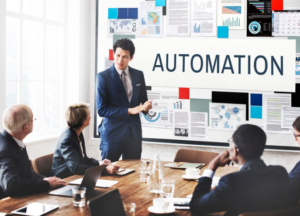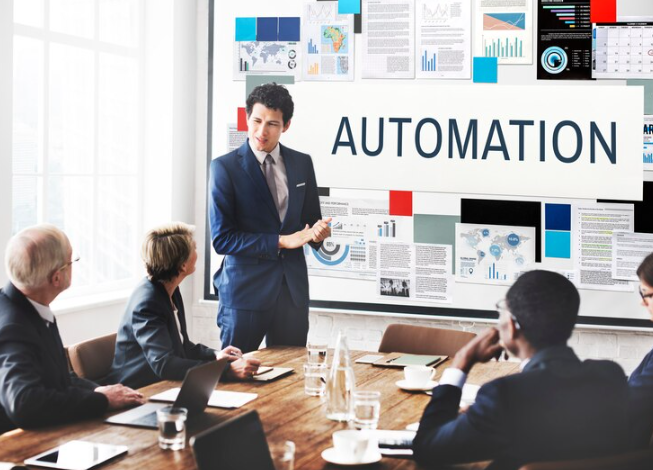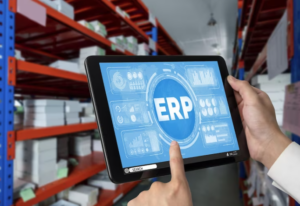Introduction
hris.balitteknologikaret.co.id | ERP Automation – In today’s rapidly evolving business landscape, staying competitive and efficient is more critical than ever. Enterprise Resource Planning (ERP) systems have long been the backbone of organizations, helping them streamline processes, manage resources, and make informed decisions. However, with the advent of automation technologies, ERP systems have undergone a significant transformation. In this comprehensive guide, we will explore the world of ERP automation, uncovering its significance, key features, benefits, challenges, and how it is revolutionizing the way businesses operate.

Chapter 1: Understanding ERP and Its Role
Before we delve into the realm of ERP automation, it’s crucial to grasp the fundamentals of ERP and the pivotal role it plays in business management.
1.1 What is ERP?
Enterprise Resource Planning (ERP) is a category of software solutions that assist organizations in managing and integrating various business processes, including finance, human resources, supply chain management, and more. ERP systems provide a centralized platform for data from different departments, enabling real-time access and data-driven decision-making.
1.2 The Role of ERP
ERP systems are the backbone of modern businesses. They facilitate:
- Process Integration: ERP systems integrate and streamline various processes, reducing redundancy and inefficiency.
- Data Centralization: Data from different departments is consolidated, offering a comprehensive view of the organization’s operations.
- Efficient Resource Management: ERP systems help in managing resources such as human capital, finances, and inventory effectively.
- Real-Time Insights: The availability of real-time data empowers businesses to make informed decisions promptly.
- Enhanced Productivity: By automating manual tasks, ERP systems free up employees to focus on strategic activities.
Chapter 2: The Evolution of ERP Automation
Automation technologies have revolutionized ERP systems, enhancing their capabilities and impact on business operations.
2.1 Traditional ERP vs. Automated ERP
Traditional ERP systems focused on integrating business processes but often relied on manual data entry and had limited automation capabilities. Automated ERP, on the other hand, leverages technologies like artificial intelligence (AI) and machine learning to streamline operations, reduce manual effort, and improve accuracy.
2.2 Key Automation Features
Automated ERP systems are characterized by the following features:
- Workflow Automation: Workflows are automated to streamline processes and reduce manual intervention.
- AI and Machine Learning: These technologies enable predictive analytics, automation of repetitive tasks, and data-driven insights.
- Data Integration: Automated ERP seamlessly integrates with other software and systems, ensuring a connected digital ecosystem.
- Real-Time Monitoring: Data is continuously monitored, providing real-time insights for proactive decision-making.
- Enhanced Reporting: Automation allows for advanced reporting and analytics, delivering actionable intelligence.
Chapter 3: Benefits of ERP Automation
The integration of automation into ERP systems brings forth a myriad of benefits for businesses. Let’s explore these advantages in detail.
3.1 Increased Efficiency
Automation reduces manual tasks, streamlines processes, and enhances operational efficiency. This leads to time and cost savings, as well as improved accuracy.
3.2 Enhanced Accuracy
Automated ERP systems minimize the risk of human errors, ensuring data accuracy and reliability.
3.3 Real-Time Decision-Making
With automation providing real-time data, businesses can make prompt and informed decisions, respond to market changes swiftly, and capitalize on opportunities.
3.4 Scalability
Automated ERP systems can easily adapt to changing business needs and growth, ensuring that the organization’s operations remain seamless as it expands.
3.5 Cost Savings
Reduced manual effort, streamlined processes, and improved resource management translate to cost savings in the long run.
3.6 Competitive Advantage
Automation sets businesses apart by making them more agile, efficient, and responsive to customer needs, giving them a competitive edge.
Chapter 4: Challenges in Implementing ERP Automation
While the benefits of ERP automation are substantial, implementation can come with its challenges. Let’s explore common hurdles and strategies to overcome them.
4.1 Data Migration
Challenge: Migrating existing data to an automated ERP system can be complex. Solution: Careful planning, data cleansing, and validation are essential for a smooth migration process.
4.2 Employee Training
Challenge: Employees may be resistant to change or lack the necessary skills to operate an automated ERP system. Solution: Comprehensive training programs and change management strategies can ease the transition.
4.3 Customization
Challenge: Businesses often have unique processes and requirements that need to be integrated into the automated ERP system. Solution: Work closely with ERP vendors and consultants to tailor the system to your specific needs.
4.4 Integration
Challenge: Integrating the automated ERP system with other software and systems in use can be complex. Solution: Engage experienced consultants and specialists in system integration to ensure a seamless transition.
4.5 Data Security
Challenge: Protecting sensitive business data is paramount. Solution: Implement robust data security measures, including encryption and access controls, to safeguard critical information.
Chapter 5: Implementing ERP Automation
A successful implementation of ERP automation requires a systematic approach. Here’s a step-by-step guide to ensure a smooth transition.
5.1 Needs Assessment
Begin by assessing your organization’s specific needs, objectives, and areas where automation can have the most impact.
5.2 Vendor Selection
Select an ERP vendor or solution provider specializing in automation. Ensure that the system aligns with your automation goals.
5.3 Data Preparation
Clean and prepare your data for migration to the automated ERP system. Ensure data accuracy and integrity.
5.4 Employee Training
Invest in comprehensive training programs to ensure that employees are proficient in using the automated ERP system.
5.5 Testing
Thoroughly test the system before going live to identify and resolve any issues or discrepancies.
5.6 Go-Live
Execute the implementation and go live with the automated ERP system. Monitor the system closely in the initial stages to address any emerging issues.
5.7 Post-Implementation
After the system is live, continue to monitor its performance and gather feedback from users. This will help fine-tune and optimize the system for ongoing efficiency.
Chapter 6: Future Trends in ERP Automation
The future of ERP automation holds exciting possibilities. Here are some trends to watch for:
6.1 Internet of Things (IoT) Integration
As IoT devices become more prevalent, ERP systems will integrate with them to provide real-time data from connected devices and sensors.
6.2 Artificial Intelligence (AI)
AI will play an increasingly significant role in ERP automation, automating tasks, providing predictive analytics, and enhancing decision-making.
6.3 Blockchain Integration
The integration of blockchain technology into ERP systems will enhance data security, transparency, and traceability.
6.4 Advanced Analytics
ERP automation will offer more advanced analytics features, allowing businesses to gain deeper insights from their data and make data-driven decisions.
6.5 Sustainability Focus
ERP automation will increasingly focus on sustainability, helping businesses track and manage their environmental impact and ethical practices.
Conclusion
ERP automation is reshaping the way businesses operate, enhancing efficiency, and enabling data-driven decision-making. By understanding the fundamentals of ERP and the role of automation, as well as its benefits, challenges, and the implementation process, organizations can harness the full potential of automated ERP systems. While challenges exist, they can be overcome with careful planning and expert guidance. As the business landscape continues to evolve, ERP automation is poised to play a central role in transforming business operations and ensuring long-term success in a dynamic and competitive environment.




